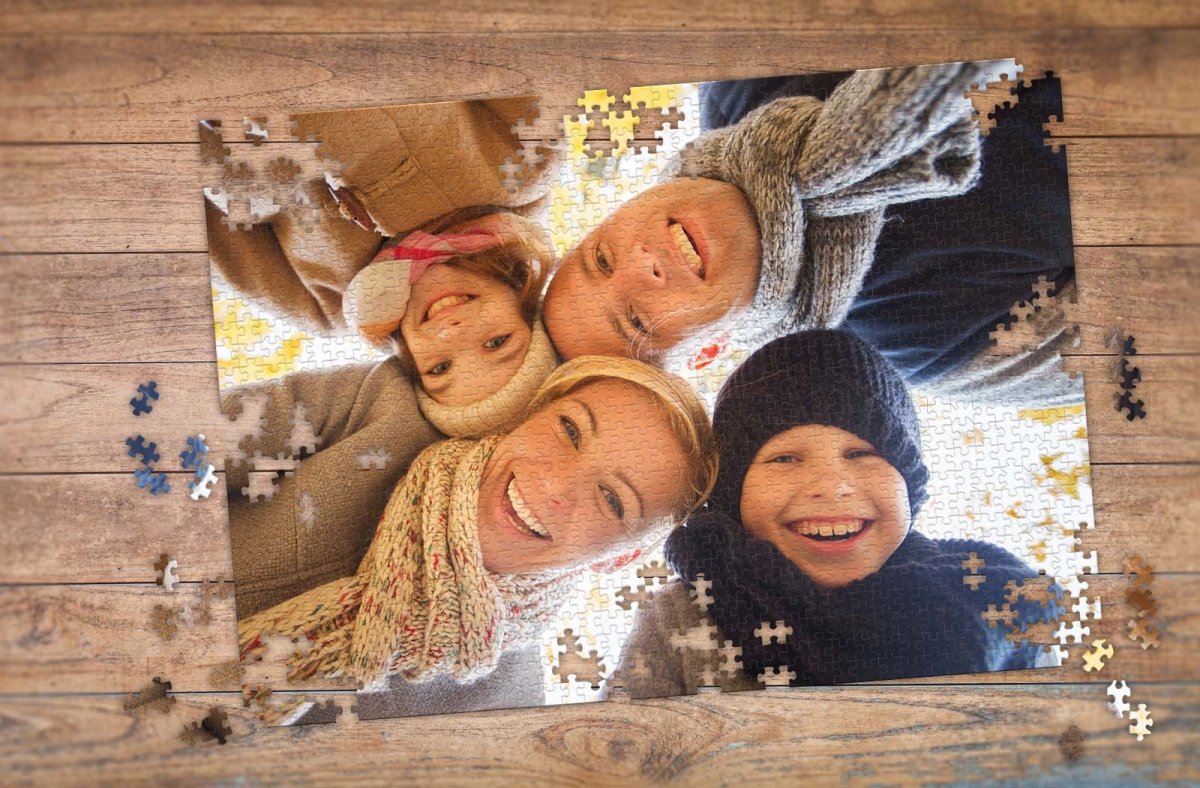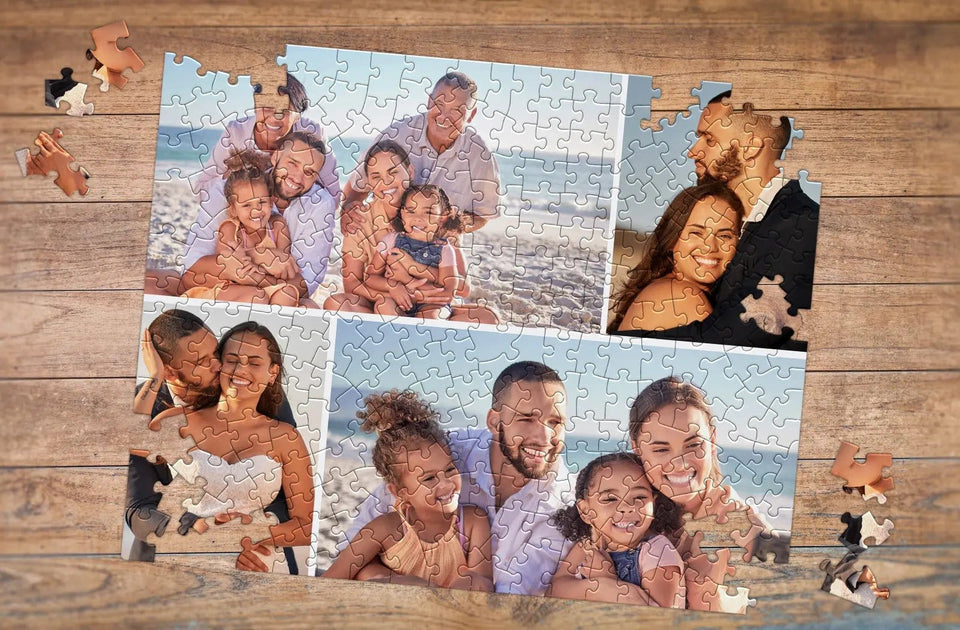Two of the most popular jigsaw puzzle cuts — ribbon-cut and random-cut — offer different experiences. While ribbon-cut puzzles provide order and structure, random-cut puzzles offer excitement and unpredictability.
Whether you’re working on a pre-made design or choose to turn a photo into a puzzle, the type of puzzle cut can significantly impact your overall experience, so it helps to know the differences. Let’s look at the characteristics of ribbon vs. random-cut puzzles to help you decide which puzzle style best suits you.
Ribbon-Cut Puzzles: A Classic, Predictable Experience
Ribbon-cut puzzles are ideal if you enjoy structure and predictability. Their uniform, grid-like pattern offers a neat and orderly assembly process. This style can be especially great for young children who are working on a 100-piece puzzle for the first time.
Why Choose Ribbon-Cut Puzzles?
- Predictability: The uniformity of ribbon-cut puzzles makes them easier to assemble, as the pieces are similar in shape and size.
- Ease of Sorting: Sorting the edge pieces and finding matches is more straightforward, making ribbon-cut puzzles a calming, meditative experience.
- Visual Appeal: These puzzles create symmetrical, visually pleasing results, appealing to those who appreciate order and neatness.
However, the consistency of ribbon-cut pieces can sometimes be a challenge in larger puzzles, as many pieces may look similar. Patience and attention to detail are often required to distinguish between them.
Random-Cut Puzzles: An Enjoyable Challenge
If you’re the type of person who loves a challenge and enjoys unpredictability, random-cut puzzles may appeal to you more. As the name suggests, these puzzles feature pieces cut into irregular, varied shapes. No two pieces are alike, adding an extra layer of complexity to the puzzle-solving experience.
Why Choose Random-Cut Puzzles?
- Unique Shapes: Each piece in a random-cut puzzle is different, making the process more engaging as you search for the right fit.
- Challenging and Fun: The irregular shapes add difficulty, forcing you to think creatively and problem-solve in unexpected ways.
- Visual Intrigue: When completed, random-cut puzzles often have a more abstract, dynamic appearance, offering a unique sense of accomplishment.
The unpredictability of random-cut puzzles adds excitement, but it can also make the assembly process more time-consuming and difficult. For those who thrive in the face of challenges, this is often all part of the fun.
Ribbon vs. Random-Cut Puzzles: Key Differences
|
Feature |
Ribbon-Cut Puzzles |
Random-Cut Puzzles |
|
Predictability |
Follows a grid, making it easy to assemble. |
Each piece is different, making it challenging. |
|
Piece Shape |
Uniform shapes that interlock predictably. |
Varied shapes require more creative thinking. |
|
Assembly Process |
Calming and methodical. |
Engaging and stimulating, with more surprises. |
|
Visual Appeal |
Symmetrical and neat. |
Unique and abstract appearance. |
Ribbon vs. Random-Cut Puzzles as Gifts
If you’re thinking about giving a jigsaw puzzle as a gift, or are looking for a unique way to commemorate a family memory, such as a recent trip, you might be considering a personalized puzzle.
A ribbon-cut puzzle, with its predictable piece shapes, is likely a better choice for small children or those who are less experienced with puzzle solving. On the other hand, random-cut puzzles are perfect for those who love a challenge or will want to devote a significant amount of time to the activity.
When giving a puzzle as a gift, don’t forget that choosing the right size jigsaw puzzle is just as important as the style of puzzle. Larger puzzles usually contain more pieces and require a larger workspace. Before you make your purchase, determine whether or not your gift recipient will have the available space.
Finally, offering to frame the gift recipient’s puzzle once they’ve finished it can be a unique part of your gift. Framing a puzzle can be a great way to showcase their accomplishment, transforming it into a special piece of art for their home.
Frequently Asked Questions
What are ribbon-cut puzzles?
Ribbon-cut puzzles feature pieces that are cut in a uniform, grid-like pattern, making them predictable and easier to assemble.
What are random-cut puzzles?
Random-cut puzzles have pieces that are cut in irregular shapes, offering a more challenging and unpredictable puzzle-solving experience.
Which is easier: ribbon-cut or random-cut puzzles?
Ribbon-cut puzzles are generally easier because the uniform piece shapes make sorting and assembly more straightforward, while random-cut puzzles are more challenging due to their varied piece shapes.
What’s the best puzzle style for beginners?
Ribbon-cut puzzles are a great choice for beginners due to their straightforward assembly process, while random-cut puzzles are better suited for experienced puzzlers looking for a challenge.








